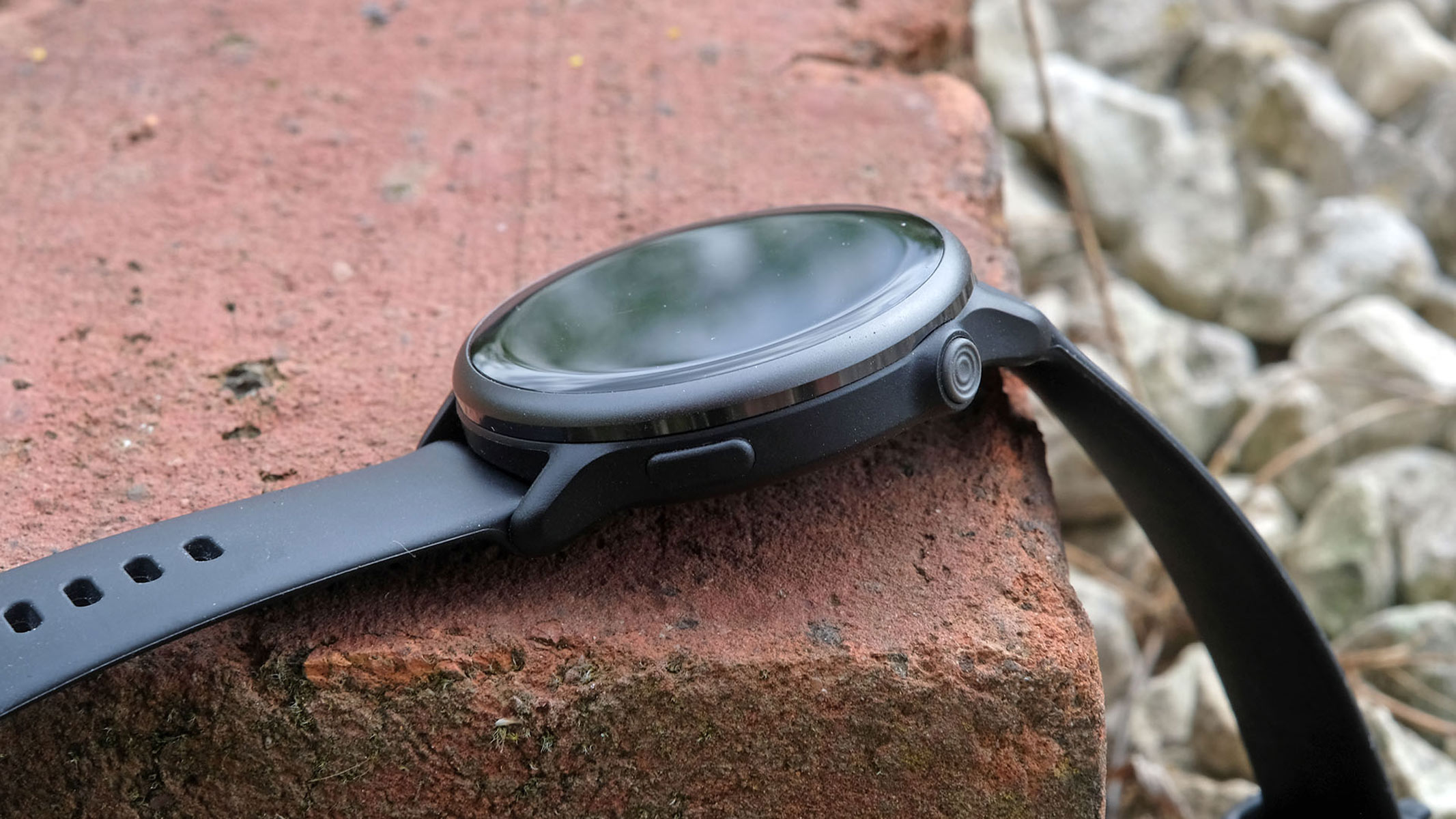
Why you can trust Live Science
Our expert reviewers spend hours testing and comparing products and services so you can choose the best ones for you. Find out more about how we test.
The Vivoactive 6 is one of Garmin’s lighter watches, in more than one sense. It looks like a smartwatch and has none of the imposing stature of a high-end series like the Fenix 8. At under 40g, you’ll forget you’re even wearing it at times, too.
This is a largely touchscreen-operated watch that can breezily guide you from being someone who doesn’t exercise to a minor master of yoga and the gym. We’d still recommend a Forerunner-series watch over this one for runners. But the Vivoactive 6 has some absolutely brilliant coaching features — you just have to dig a little further below the surface than we’d like to discover them.
The Garmin Vivoactive 6 costs $299/£279/€329. While not cheap, it is among Garmin’s more affordable watches, and comes in black, green, gold and pink shades.
Garmin Vivoactive 6 review
Garmin Vivoactive 6 review: Design
- Light, compact and comfortable to wear overnight
- Bright and detailed 1.2-inch OLED display
- 5ATM water resistance

Key specs
Screen: 1.2-inch, 390 x 390 AMOLED
Connectivity: Bluetooth, Wi-Fi
Water resistance: 5ATM
Storage: 8GB
Battery life: Up to 11 days
Dimensions (in): 1.65 x 1.65 x 0.43
Dimensions (mm): 42 x 42 x 10.9
Weight: 1.27 oz (36 g)
Many of Garmin’s watches are imposing things that make you wonder if you’re even qualified to own them. The Vivoactive 6 is not one of these: it’s a plain watch made in smartwatch style. It’s small, it’s light and it’s fairly thin. The Garmin Vivoactive 6 is a watch you can comfortably wear overnight, and you’ll want to, as it can track your sleep, too.
While this watch isn’t quite as expensive-looking or as characterful as some rival smartwatches, it has certain touches of class that Garmin’s more purely fitness-focused watches lack. The Vivoactive 6’s bezel is aluminum, for example, and the top surface is Gorilla Glass 3, a circle of the stuff slightly domed at the perimeter.
This is not the hardest material around, though. We managed to put a light nick in the glass over a few weeks of testing, and that risk is increased by the lack of a bezel lip over the display glass.
The screen itself is great, though. The Garmin Vivoactive 6 has a 1.2-inch OLED display of 390 x 390 pixel resolution. It’s sharp, it’s bright and it holds up perfectly well in dazzling direct sunlight.
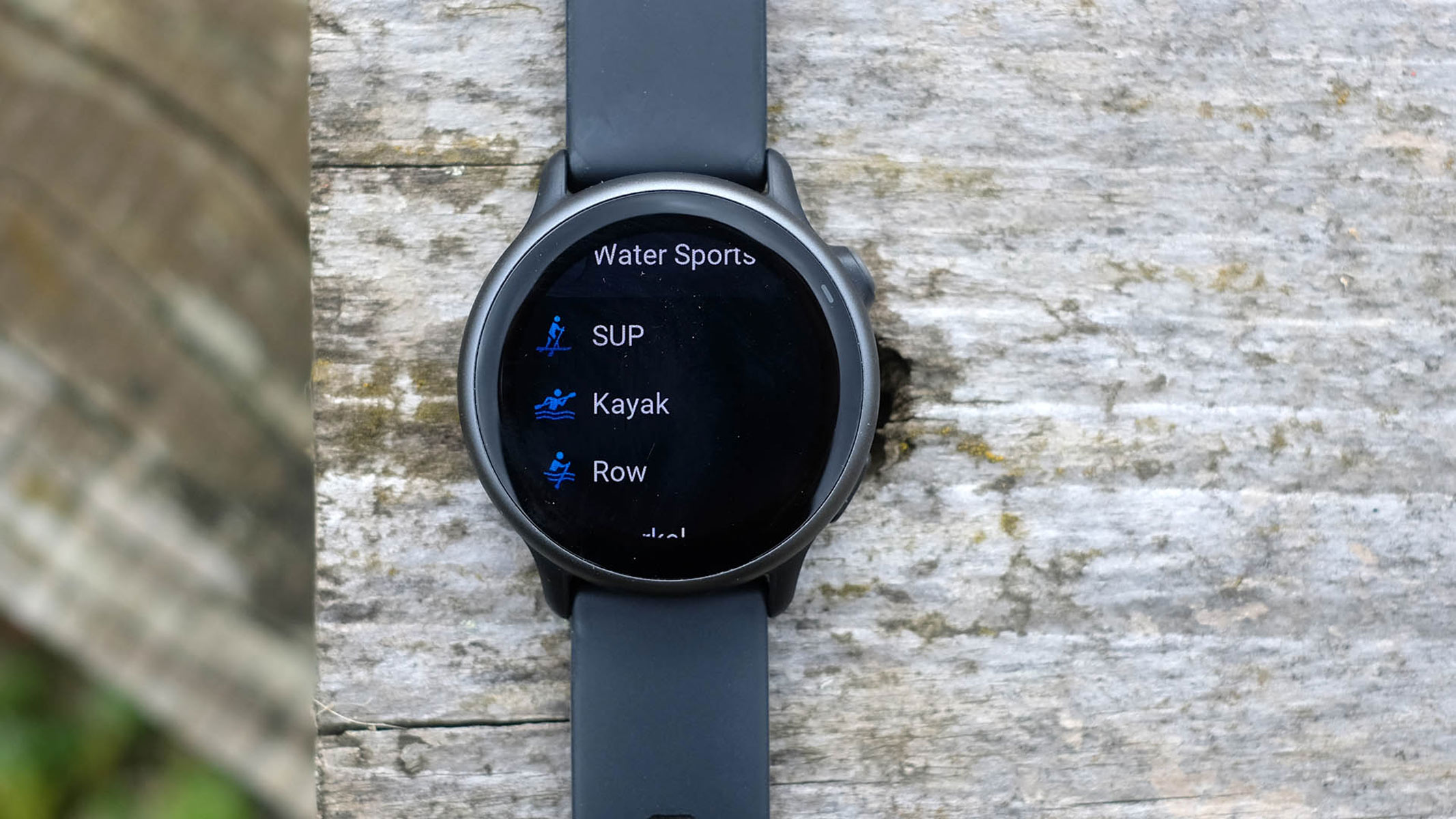
Contrary to how we usually test Garmin watches, we kept the Vivoactive 6’s display in its default mode most of the time, where it switches off after a few seconds, only turning on with a wrist flick, button press or screen tap. An always-on mode is available too, but this comes with a significant cost in terms of battery life. More on that later.
Charging aside, there’s no major reason to remove the Vivoactive 6 in day-to-day life. It’s comfy, and 5ATM water resistance is solid enough for use while showering or swimming in a normal pool.
If you’re only, or at least primarily, looking for a Garmin for fitness use, though, you might want to consider a more button-driven watch like the Forerunner 165. The Vivoactive 6 has two buttons, but to switch between info screens during exercise here you have to swipe the touchscreen. While this works just fine, during strenuous exercise a reliable old button press can feel better.
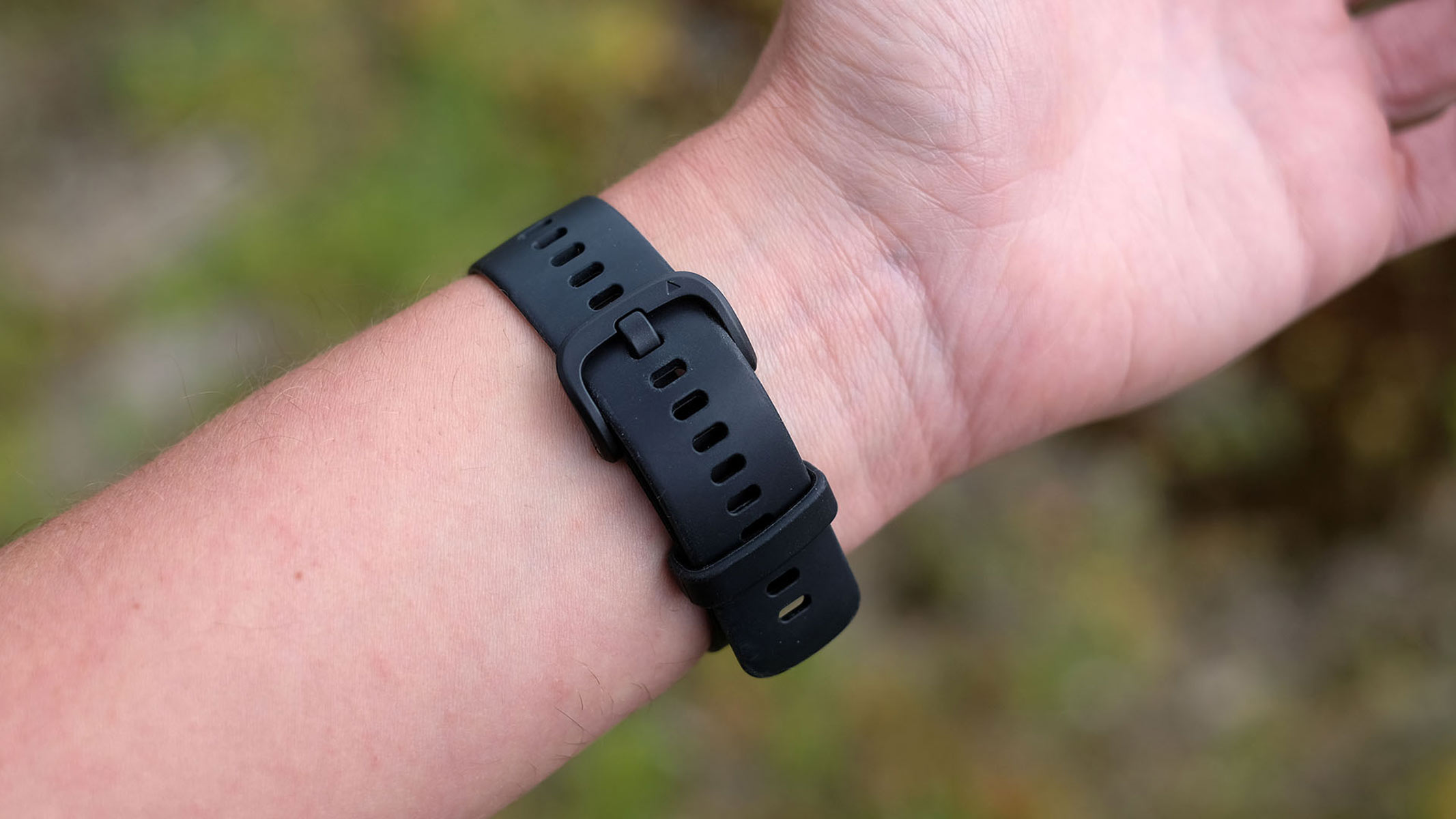
Garmin Vivoactive 6 review: Features
- Beginner-friendly workouts
- Limited on-watch navigation
- Plenty of health-tracking features
The Vivoactive series has for years offered a more approachable entry point to the Garmin range, more so even than the more expensive Venu family. This generation sees the Vivoactive 6 gain a bunch of useful fitness features.
You get suggested workouts, which are like personal trainers you don’t have to pay for. The watch also supports structured, gym-style workouts — selected or custom-made in Garmin Connect on your phone — and you can send over courses (basically routes) for on-watch navigation.
Animations are supported, too. These show you what everything from sit-ups and squats to cow yoga poses should actually look like — handy for those who are just getting into gym-like sessions, Pilates or yoga.
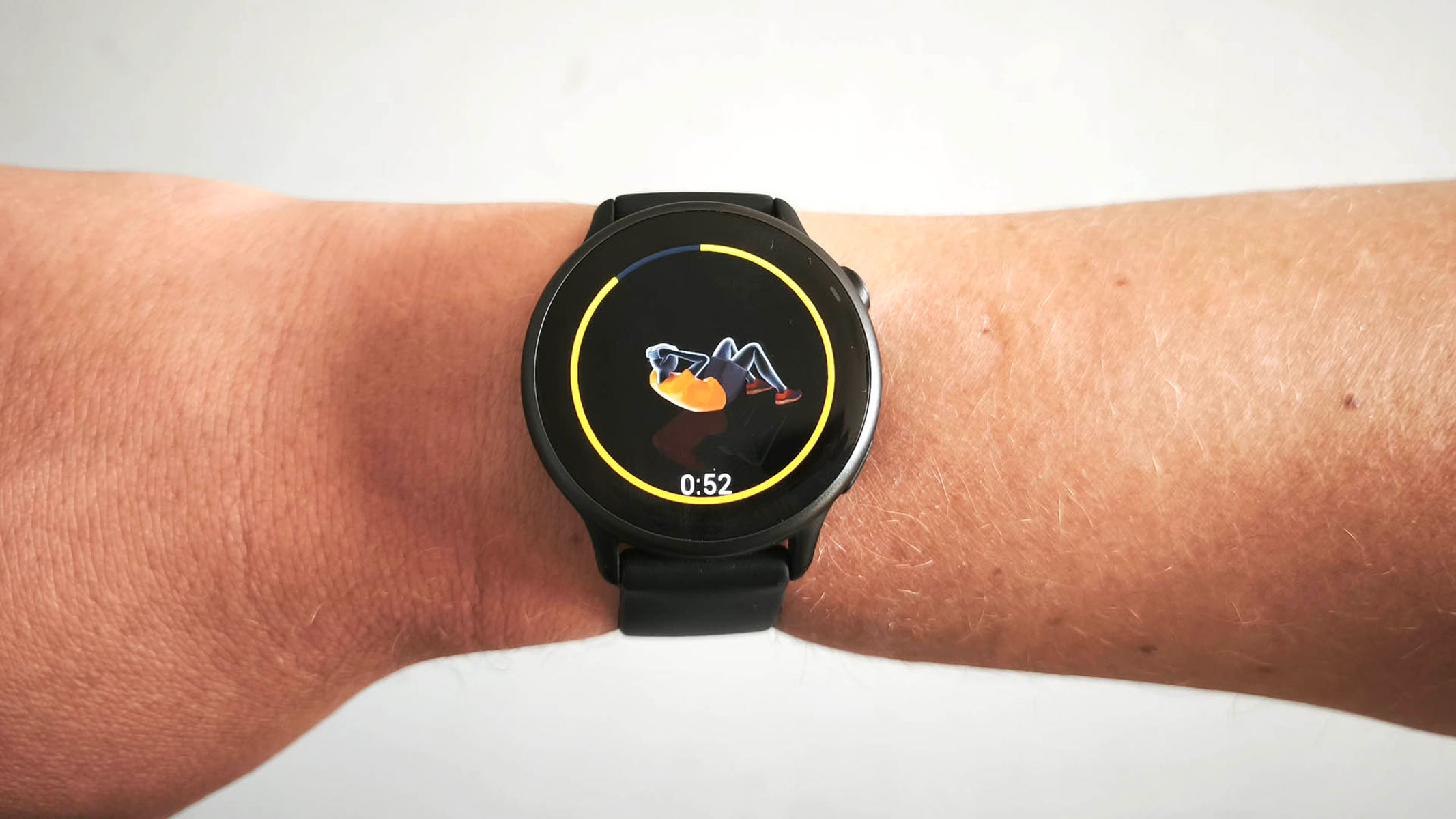
Our first impression of the Vivoactive 6 was that it could be a surprisingly hardcore fitness watch, given its price and standing within the Garmin range. There are, however, some important limitations to note.
The Vivoactive 6 only supports Suggested Workouts for walking, not the running and cycling activities that are the usual options. This feature is where you’re given a workout each day, based on how well-rested your watch thinks you are, and the other exercise you’ve done recently.
The problem is, suggested walking workouts are likely to only be of interest to true exercise newcomers, older folks and those recovering from injury, not the average Garmin watch buyer. They’re not that interesting.
Oddly enough, the Vivoactive 6 does offer far more hardcore guided workout plans. Using Garmin Coach, the watch can supply you with a marathon training plan. You can also use this feature to roughly replicate what Suggested Workouts does (or do a couch-to-5k), but it’s so user-unfriendly that we actually had to ask Garmin how to get this to work, and that’s after reviewing Garmin watches for years.
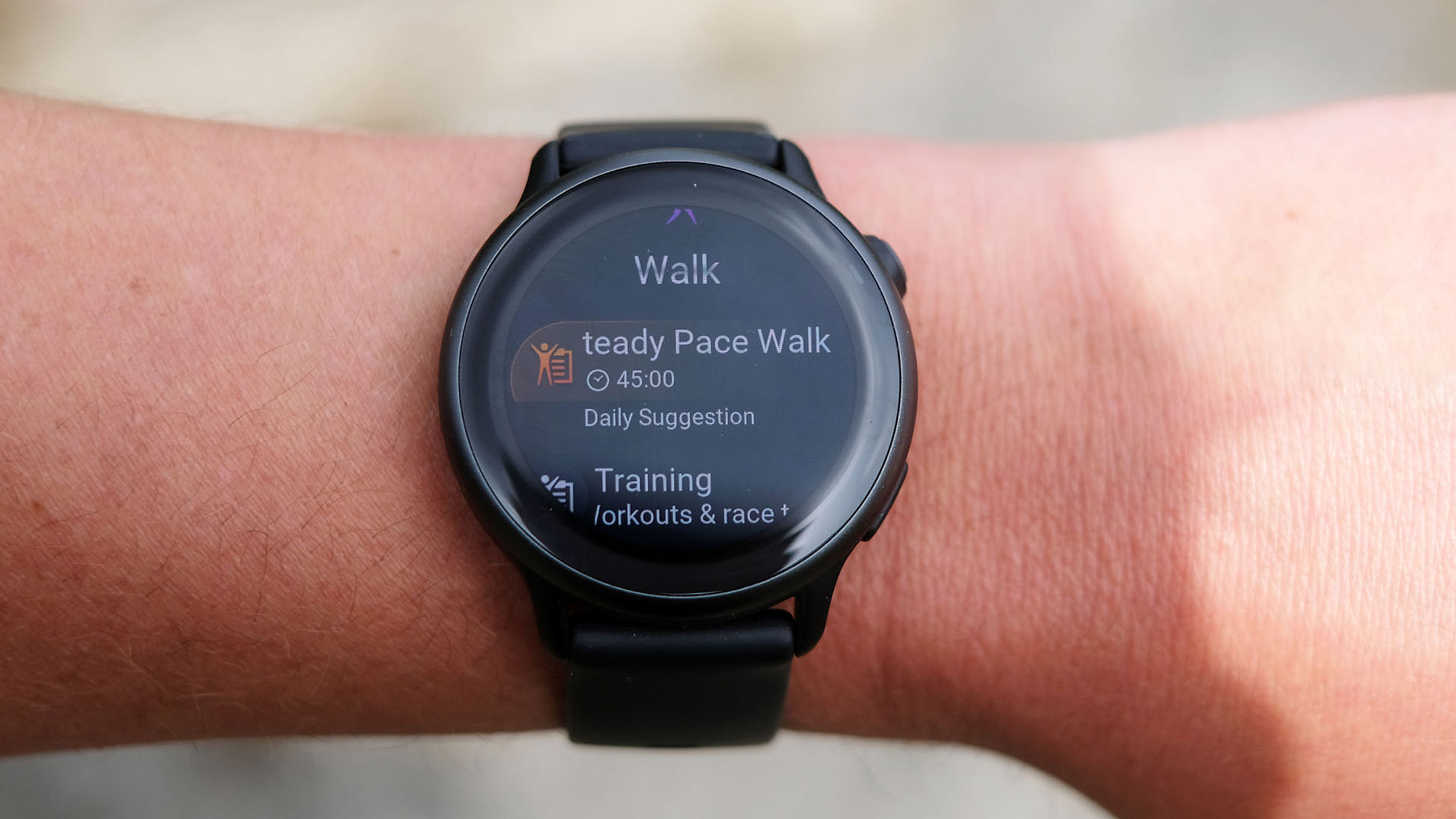
On-watch navigation is fairly limited, too. As with every Garmin watch of this level, you don’t get on-watch maps. The Vivoactive 6 also lacks turn-by-turn navigation. During testing, we used the watch to navigate through a half-marathon course in Tenerife, an unfamiliar area, and keeping on track was more difficult than it would be with a Forerunner rival. This watch will alert you when you go off-course, andit shows a breadcrumb trail of where you should be going. But you don’t get an auditory or visual cue when a turn is coming up.
These niggles aren’t necessarily deal-breakers for the Vivoactive 6’s target audience. They just mean the watch can’t claim a total victory over something like the Forerunner 165 or 265, which are more exercise-obsessive-friendly.
The Garmin Vivoactive 6 also lacks an altimeter, used to measure the number of stairs you climb (or alternative ascents) each day. Such a feature is ideal for a lighter fitness tracker like the Vivoactive 6.
These things aside, though, the experience of using the Vivoactive 6 is great. It has a slick and pretty intuitive interface that relays your daily stats beautifully and handles phone notifications well.
There’s solid sleep tracking, Garmin’s excellent Body Battery feature, a wealth of exercise modes and support for music. The Vivoactive 6 does not have a speaker built-in, but it can send music to Bluetooth headphones, from locally stored tracks or ones streamed from Spotify, Amazon Music or Deezer. The watch has 8 GB of storage, 5.3 GB of which was accessible on our review watch.

It has Garmin Wallet too, for wireless payments with supported banks. Check Garmin’s website to see if yours is on the list.
This was also Garmin’s first watch to get smart alarms, which analyze your sleep cycle to wake you up when you’ll feel most refreshed, up to 30 minutes before your actual alarm time.
Garmin Vivoactive 6 review: Performance
- Reliable GPS tracking
- Good accuracy of heart rate measurements
- Up to 11 days of battery life
The Garmin Vivoactive 6 does not have every latest techy standard among fitness watches, but what it does have is mostly rock-solid. GPS location tracking is reliable, consistent and has as fast a lock-on as Garmin’s far more expensive watches, taking just a few seconds.
Its heart rate sensor produces good readings both during exercise and while going about your day. This also feeds into believable stress stats, which are viewable on your daily stats as a graph tracking stress levels over the last four hours.
However, compared to the Fenix 8, the watch’s heart rate reader is slower on the uptake during weight lifting sets. And on a couple of long runs during which we took a short break, the watch would sometimes struggle to lock on to the right reading, typically registering about 20 bpm lower than the real figure for a few minutes.
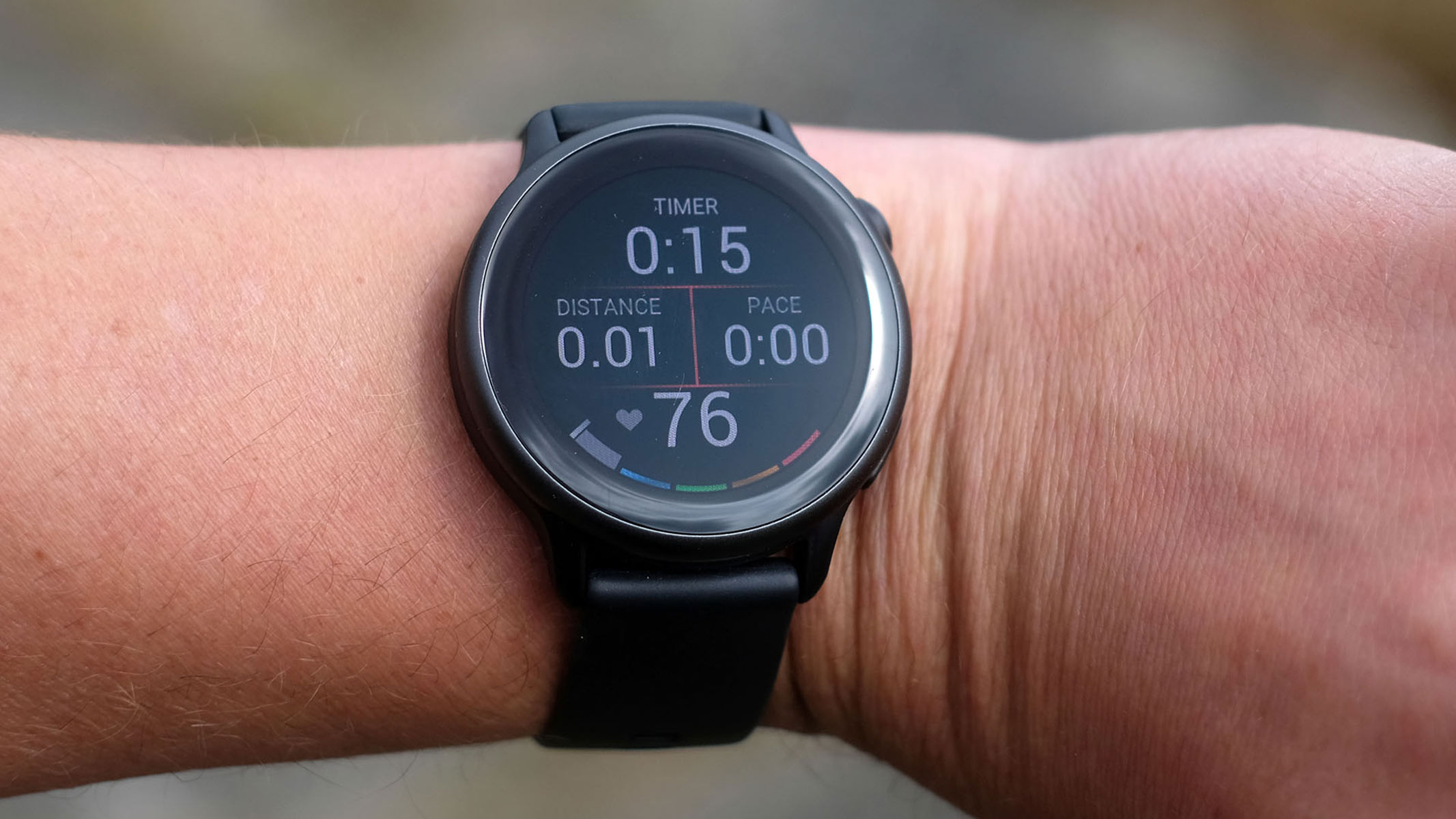
Once or twice, the Vivoactive 6’s pace stats were off during a run when under dense tree cover, suggesting a slight GPS fumble. Why might this be? What you’re missing out on here is Garmin’s very latest generation heart rate reader array and dual-band GPS. We’re on par with models a few years old.
While the Vivoactive 6’s HR accuracy is still generally solid, this older hardware rules out being able to ever take ECG readings with this series. That’s a way to look for signs of arrhythmia, but it does require active participation, typically a 30-second manual reading session.
The watch doesn’t have Garmin’s very best hardware or its top accuracy, but for the price? It’s still one of the best performers.
Garmin’s battery estimate of up to 11 days of use between charges is likely to be a bit optimistic if you use the watch’s GPS a lot. An hour of tracked running takes 6% off the battery level, and with our level of use, a charge lasts around six to seven days.
This dropped to a little under four days with the “always on” screen mode switched on. However, we were running for up to six hours a week during testing, with several tracked gym sessions on top. 11 days is likely still achievable with lighter use.
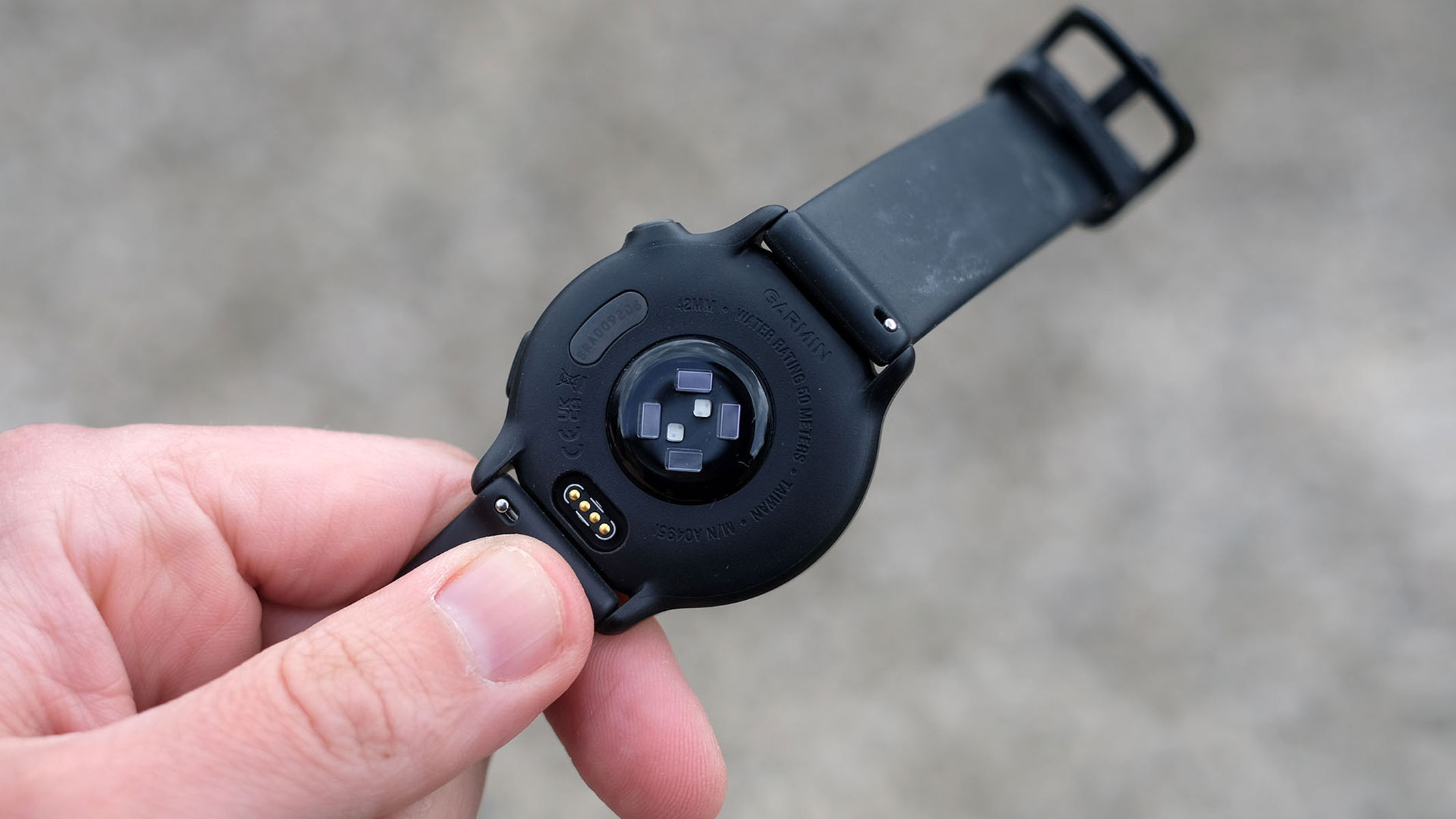
Garmin Vivoactive 6 review: User reviews
Garmin’s Vivoactive 6 received mostly positive reviews from buyers, sitting at a solid 4.1 out of 5 rating at Amazon at the time of writing.
Complaints from reviewers included the lack of support for YouTube Music, which has been present as a music provider in previous watches, and a lack of customisation.
There was also some criticism regarding how the Vivoactive 6 handles notifications. It will forward on any notifications your phone receives, but there’s no ability to limit the apps on the guest list.
Should you buy the Garmin Vivoactive 6?
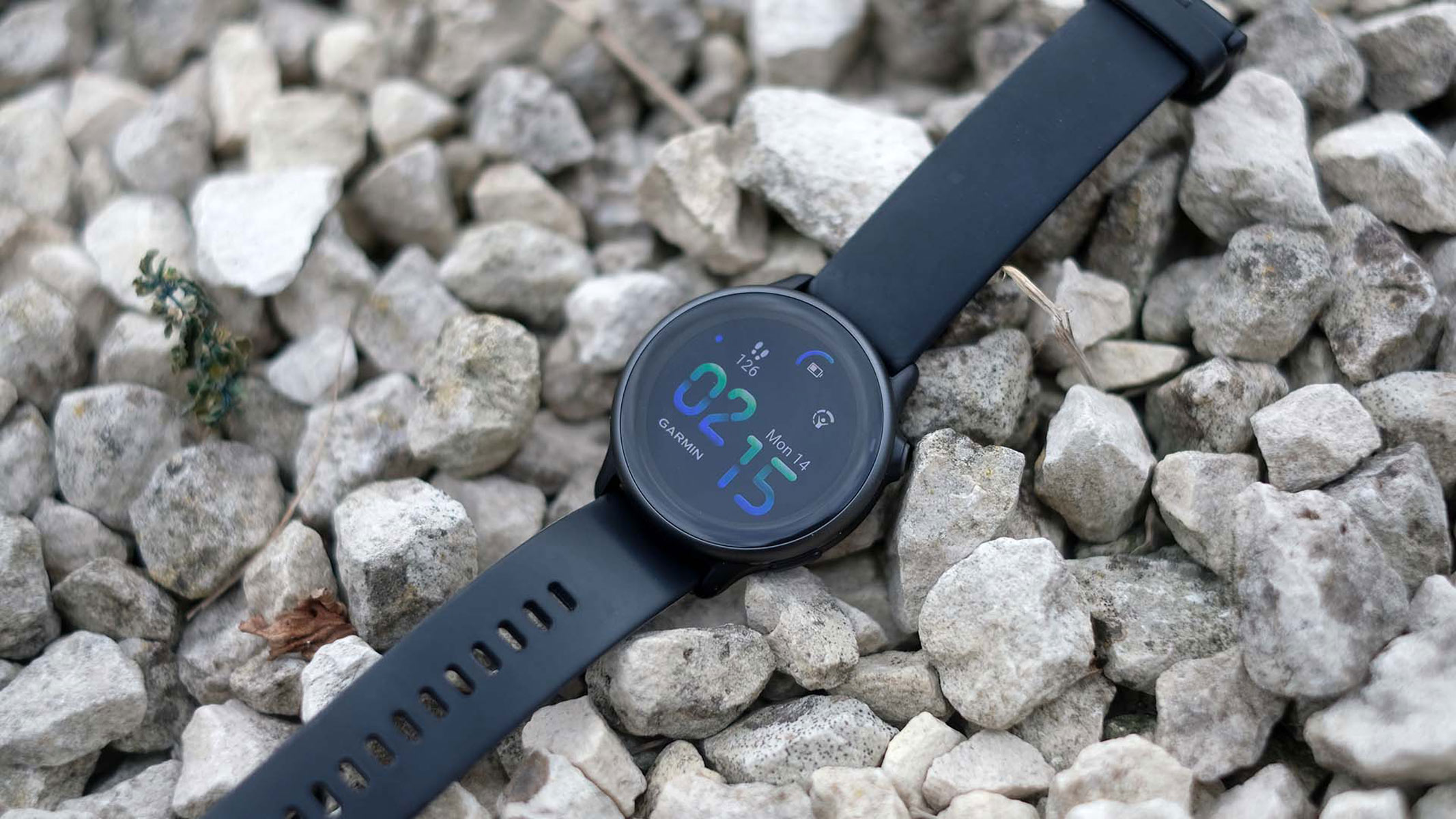
The Vivoactive 6 is an easygoing watch that combines Garmin’s latest slick, smartwatch-like interface with some fairly impressive workout features. You can create your own routes and routines, and be led along them by this watch.
It’s not quite a match for the Forerunner series when you look deeper into this fitness side, as you’d expect. But for beginners and those just dipping a toe into the waters of structured workouts and properly planned exercise, it’s ideal.
We found the Vivoactive 6’s battery life a little shorter than claimed when it was subjected to a demanding workout schedule. But if that’s your style, then you may (and we do only mean may) want to consider a Garmin Forerunner instead.
If the Garmin Vivoactive 6 isn’t for you
Garmin’s step-up model from the Vivoactive 6 is the Venu 3, a much more expensive watch from 2023. The Vivoactive 6 is likely better value for most people, though, given it still has a wide array of features and admirable tracking skills. And the Venu 3 does not support transfer of routes for navigation either — the Vivoactive does.
If you are put off by some of the limitations mentioned above, then check out the Garmin Forerunner 165. It’s less clean-looking, but it offers arguably the best value for money in the entire Garmin line-up.
How we tested the Garmin Vivoactive 6
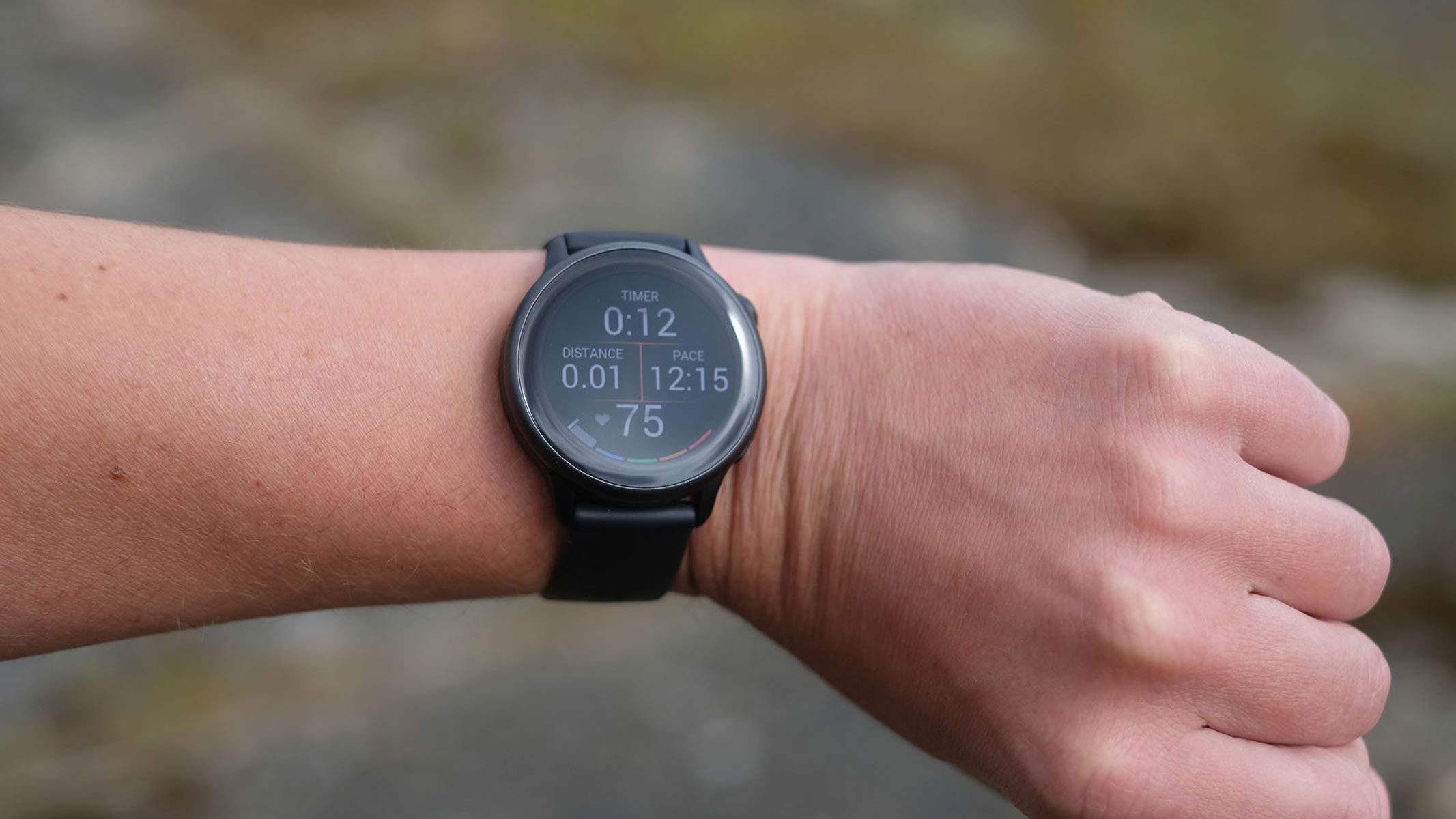
The Garmin Vivoactive 6 was tested over the course of just over a month, during which it was used as our primary fitness tracker and worn nearly 24/7.
Testing included more than 250km of tracked runs — including a couple of parkruns — a dozen or more gym sessions, several outdoor swims and even a trek up a mini long-dormant volcano.
Over that period, the Vivoactive 6 was used both in its power-draining always-on screen mode, and how it comes fresh out of the box. This provides the best view of real-world battery life.





